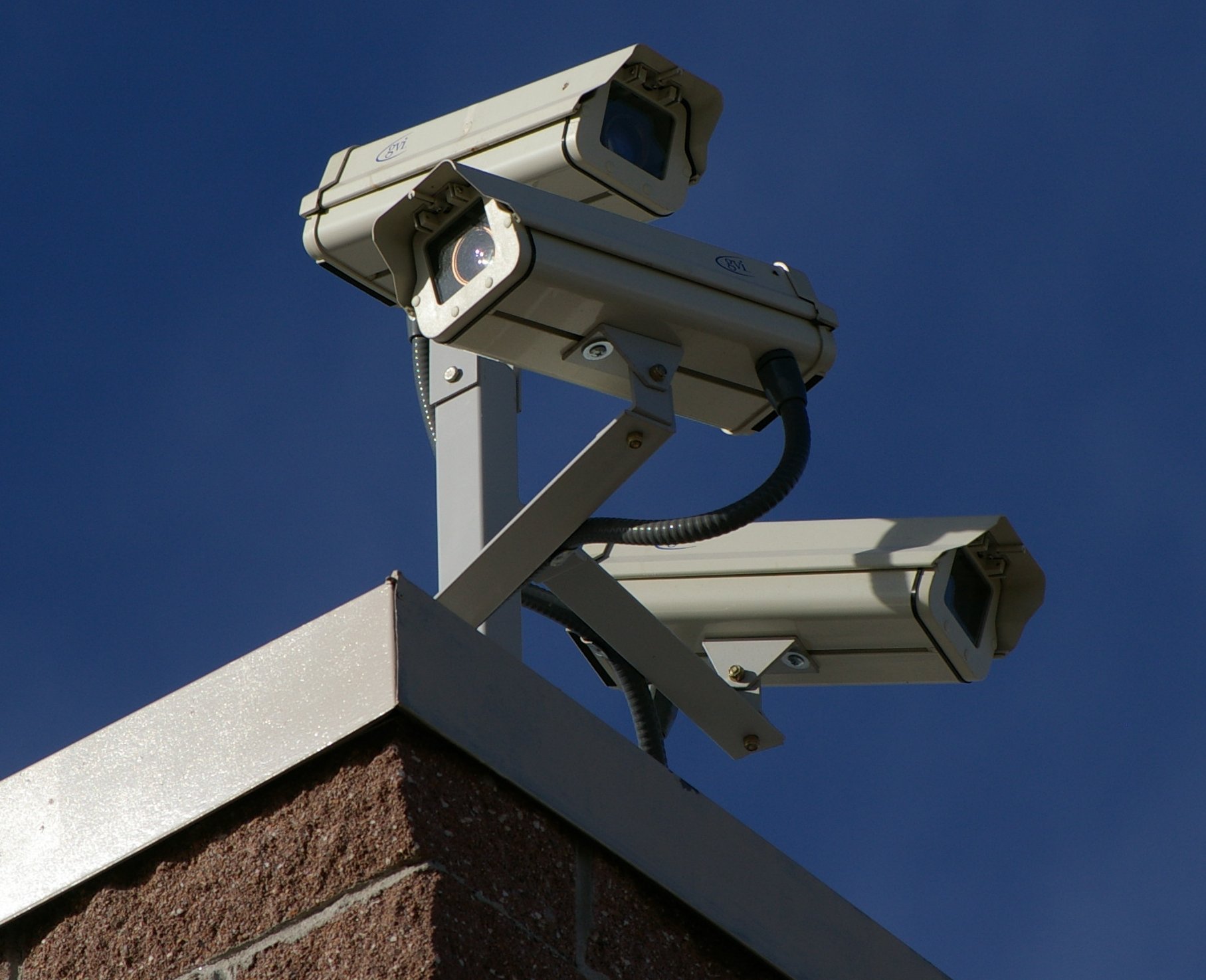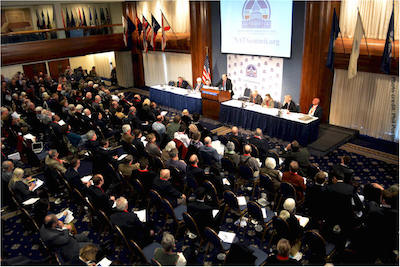The Surveillance State Arrives
Sep 9 2014 / 2:22 am
By Philip Giraldi.
The Unz Review – As someone who studied English history as an undergraduate and then went on to do two postgraduate degrees at the University of London I have to admit to lifelong Anglophilia. Nevertheless, I sometimes continue to be astonished at how differently John Bull and Yankee Doodle view, in particular, the relationship that one has with the state. This is particularly true regarding how the two peoples value their individual liberties and personal responsibilities relative to what the state permits them to have and do. Perhaps that fundamental difference explains in part the American Revolution given the essentially Hobbesian views that many Englishmen likely hold regarding their monarchy.
Much of my interaction with current British culture is by way of television, with mysteries and crime dramas predominating. As a general rule, the English appear to regard their police more favorably than do their American counterparts, possibly a result of concerns over the recent militarization of law and order in the US. But it might also be because the British public sees things differently, expecting that the police, as guardians of the prevailing social order, have some kind of inherent unwritten right to behave in peremptory fashion.
Indeed, heavy doses of British television produced for the home audience invite consideration of the differences in perception that are manifest in two cultures that more-or-less speak the same language. If art does truly imitate life, then what is on the screen must surely reflect the dominant perception of reality in Britain just as American shows like “24” mirrored a pervasive view of how to deal with terrorism in the wake of 9/11.
On one British mystery offering Midsomer Murders I watched as two detectives went around to a man’s home to interview him. He was not home and even though the cops did not have a search warrant, they decided it might be a good thing to enter and have a look around. They went to the back of the house and tried to jiggle open the patio door only to discover that the homeowner, having experienced several break-ins, had personally rigged up a defensive device that shocked anyone trying the door handle. The detectives found another way into the house and while they were standing in the sitting room discussed whether they should charge the homeowner with the crime of “reckless endangerment” or not.
So much for an Englishman’s home being his castle, but the casual way in which the police decided to break into someone’s home was unfortunately all too reminiscent of some reckless SWAT arrests in the US in which innocent people sometimes wind up dead. In 2006 in Fairfax County Virginia, a swat team serving a gambling warrant killed an unarmed and non-threatening man outside his home. In neighboring Prince George’s County Maryland in 2008 police acting on false information broke down the door to the local mayor’s house, shot dead his two Labradors, one of which was running away, and handcuffed his elderly mother-in-law, forcing her to lie on the floor before realizing that they had make a mistake.
In another episode in yet another British mystery series Scott & Bailey, a 33 year old woman comes forward to tell police about her recollection of an event twenty years before. As a thirteen year old she was forced by her father to witness the burial of her brother in the basement of their home. Her brother had been killed by the father and when the basement was eventually excavated by police four more bodies of young men were discovered. The young woman’s reward was to be charged by the police with “assisting in an illegal burial” even though she was only thirteen at the time and forced by her father to participate. I thought to myself, “Wow, we really do see law and order differently!” The young woman was subsequently shunned because of her “crime” and eventually committed suicide, but her death was preceded by a lengthy car chase on the motorway connecting Manchester with the Irish Sea.
And the car chase was where the really interesting content surfaced. The police quickly identified the vehicle from a CCTV camera that had license plate identification capabilities. From that point on cameras followed the vehicle down the highway and were even able to zoom in close enough to make an identification of the occupants presumably using biometric or facial recognition software capability. I am sure the writers of the British script were fairly nonchalant about including the high speed pursuit by cameras but I was quite frankly shocked by it as it reveals a technical capability to intrude on one’s privacy that is, to put it mildly, breathtaking.
Speed and traffic monitoring cameras are in fact common in most of Europe, where state intrusion into areas that most Americans would regard as private has been a fact of life for many years. Speed cameras are also becoming more frequently observed in the United States, though not without some controversy over the purpose, reliability and legality of the technology. In states like Maryland where they are widely used it is even illegal for a driver to tip off another driver by blinking one’s lights when a camera or police speed trap is coming up because that would be “obstructing a police investigation.”
Britain is, in fact, the most surveilled major country in the world. It is estimated that more than 8,000 cameras in the police network alone are providing 26 million images every day, but the government refuses to make public the actual numbers. This is because in Britain as in the US the public is not allowed to know what the police are doing. British police reportedly want to increase the camera coverage by a factor of three within the next four years, claiming that it makes the public “safer.”
If one reads crime or missing person reports on the BBC the use of CCTV cameras to track the movement of individuals is routine nearly everywhere. The disappearance of Claudia Lawrence in York in 2009 was described in a BBC report that included the following: “The officer said she did not appear on any CCTV footage from her normal route to work on Thursday.”
On the basis of the CCTV, the police were able to reconstruct a three mile route through the city with reasonable assurance that they had not missed Lawrence, ruling out her having walked to work. That the police would be able to do that is astonishing, a level of government surveillance capability that is several generations beyond traffic and speed cameras.
Indeed, to judge how close we Americans are to complete surveillance it is helpful to look closely at those developments in the United Kingdom, which best provide some hint of what might be coming. Exploiting anti-terrorism legislation, the British government routinely monitors telephone calls and e-mail messages, much like the National Security Agency does illegally in the US. Cameras now provide continuous coverage of the centers of most cities and there is surveillance of all major roads and bridges by CCTV that is monitored both using software and by on duty officers before being stored for up to two years.
There is no legislation prohibiting what has been described as suspicion-less surveillance and one data base alone of images captured by the Automated Number Plate Recognition system (ANPR) has 17 billion items in its archive. It was originally intended to identify license plates of vehicles known or suspected of being involved in a crime, but it now records all vehicles passing by. One critic described the police as “…gathering details about people’s lives that it did not need to have.” It is all reminiscent of Winston Smith in “1984” whose television was watching him while he was doing exercises in front of it. Maybe George Orwell knew what was coming.
But to return to the car chase, I had to do some digging to find out whether the CCTV tracking of a moving vehicle was technically feasible. It is. The British ANPR system is set up to photograph a car’s license plate as well as the entire vehicle, to include an “admissible for identification purposes” picture of the driver and passengers. Date, time, and direction of travel are automatically recorded. Many of the CCTVs are fixed, but pan tilt zoom cameras that can locate and lock onto a target and also analyze it are used by many police forces and were featured in the security preparations for the 2012 London Olympics. They are capable of reading license plates and recording facial and whole body characteristics for identification and investigative purposes. Their “intelligence software” can also switch them from target to target. To use them in a surveillance role on a major highway would merely require spacing them closely enough to provide continuous coverage within their operational range.
The issue of the cameras themselves is distinct from how effective they are. The British police claim they prevent crime and make everyone “safer” but are a bit vague on the details. In one reported case a 17 year old girl was killed by a known sex offender who was identified six times by highway cameras without any of the leads provided by the technology being followed up on. And then there is the political aspect of total surveillance all the time. A local police force spent 3 million pounds placing 200 cameras in Muslim communities in Birmingham.
Mobile CCTV that permit one to cruise through neighborhoods with the camera scanning and analyzing license plates and faces as the vehicle drives by have also been developed and mounted in police cars both in Britain and the US. But of course, all the talk of cameras might be irrelevant. The United States is a leader in drone technology which makes it possible to take a quantum leap over CCTV and go directly to targeted surveillance of multiple suspects without the expense and vulnerability entailed in geographically dispersed fixed emplacements. Drones are already in the hands of a number of police forces, including one in Texas that is able to fire a Tazer or a so-called “stun baton.” So you can find, surveil and zap the bad guy all in one easy operation.
The serious point in all of this is that surveillance technology is moving ahead rapidly without any commensurate body of law or legal limitations on how and when it can be used. It’s beyond time for Washington to initiate new legislation regulating technical surveillance of individuals lest we willy-nilly conform to the British model, but as the government is also the prime consumer of the technology there is little likelihood of that happening. Very soon that buzzing in your ear could very well be a drone hovering overhead.

